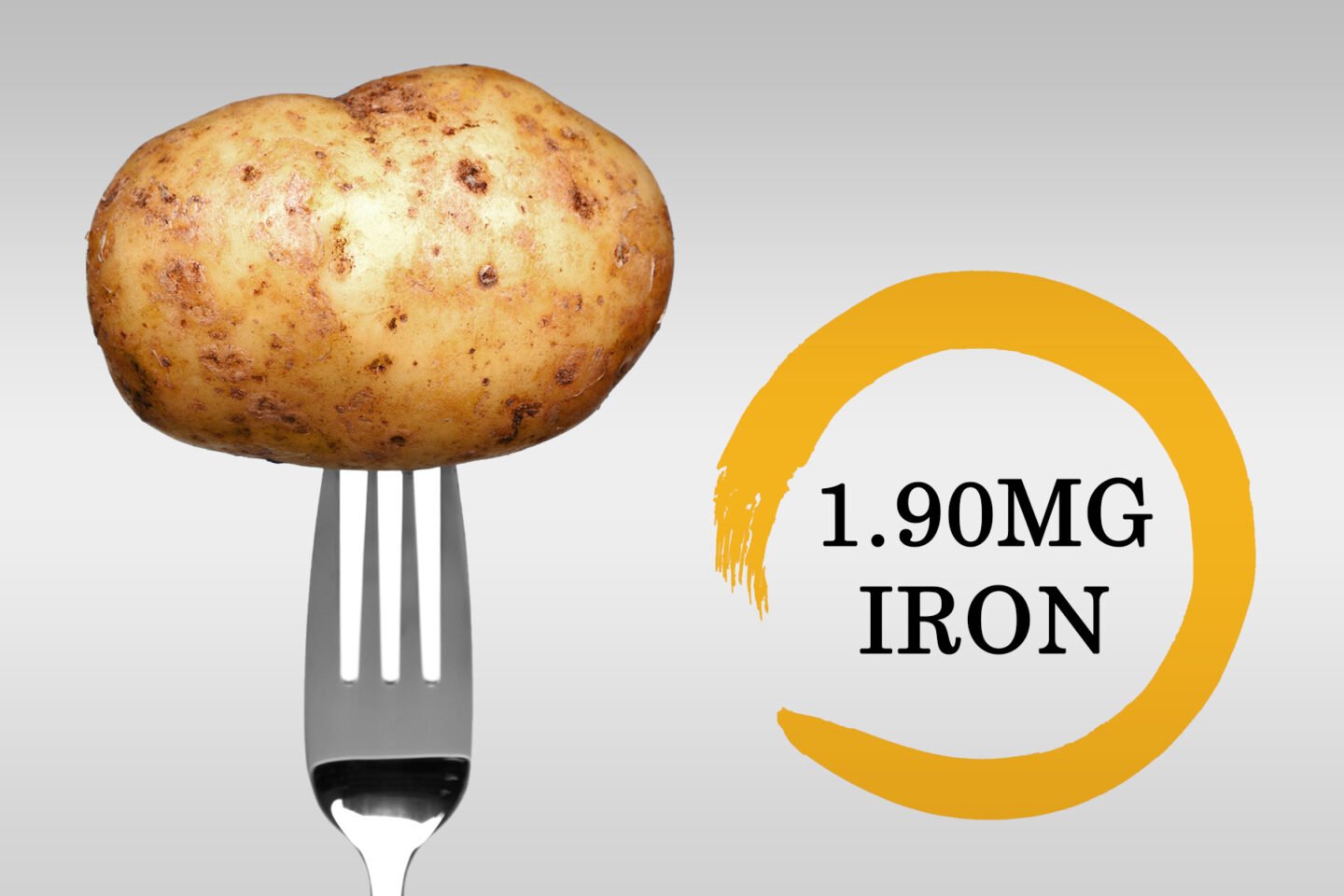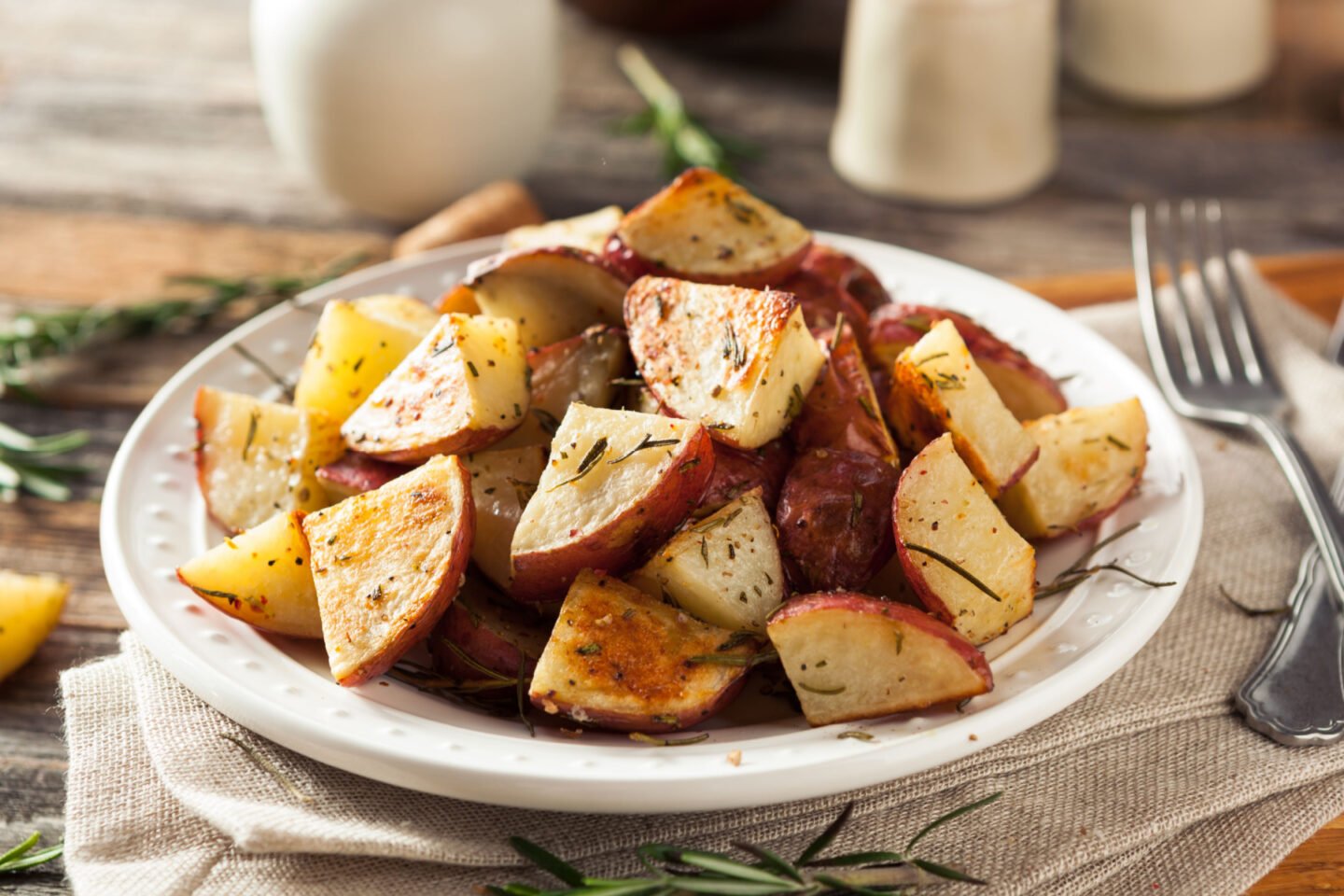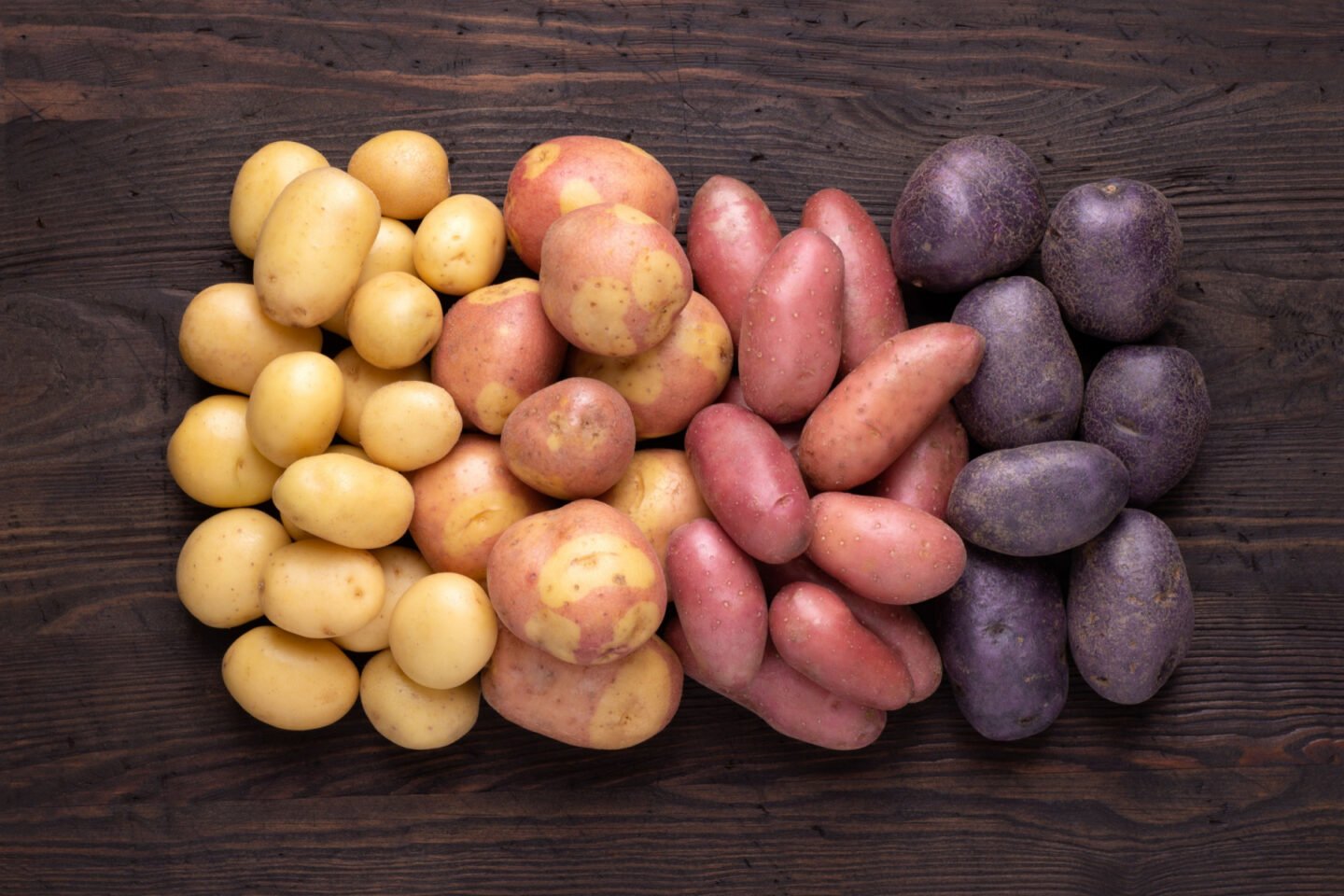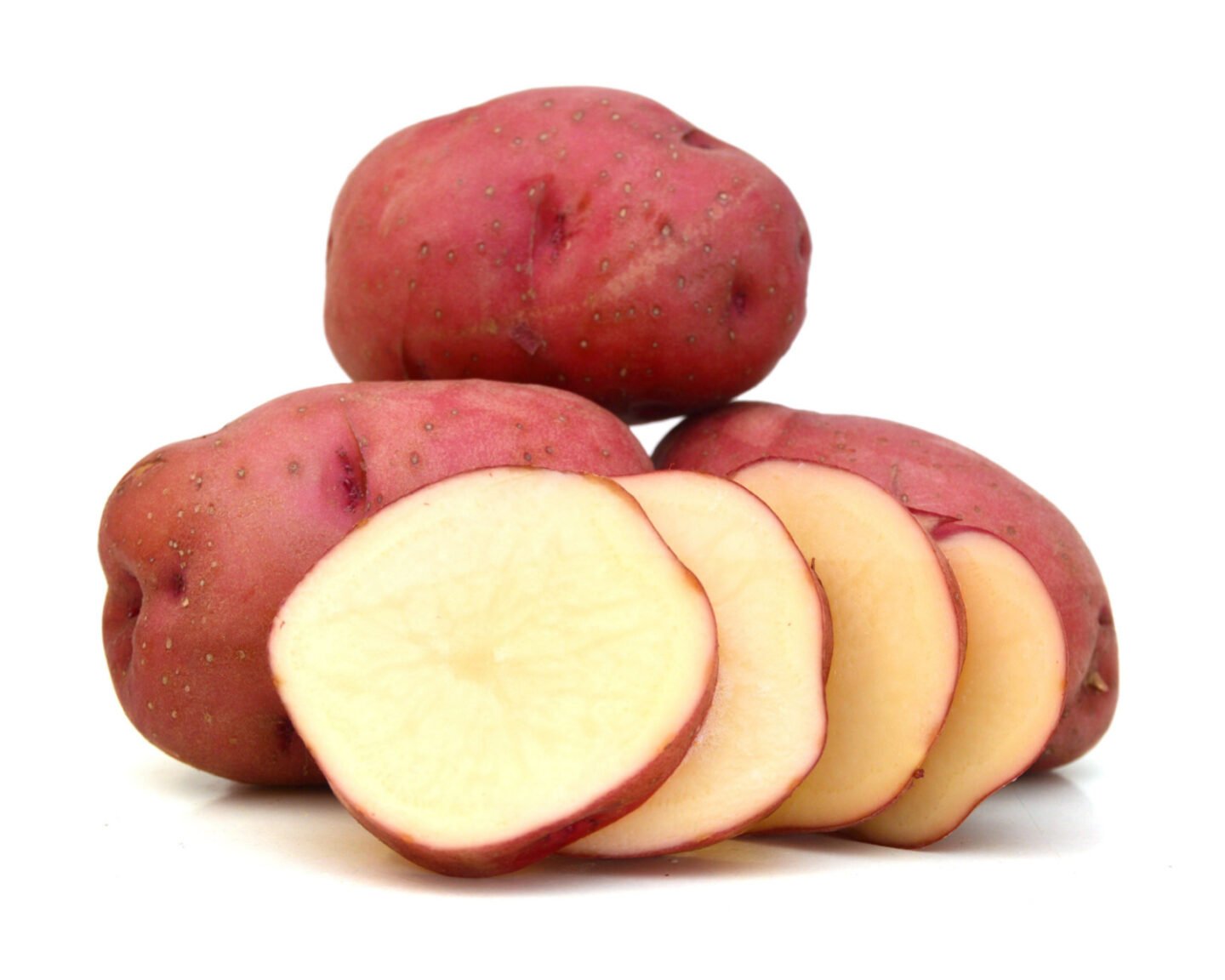Potatoes are a versatile root vegetable that’s popular globally, nutritious, high in calories, and fits well in all diets. Potatoes also contain iron, which is essential for making hemoglobin in red blood cells.

Table of Contents
- Are Potatoes High or Low in Iron?
- How Much Iron Is in Potatoes?
- Can You Get Enough Iron From Potatoes?
- Are Potatoes Healthy?
- Can You Get Too Much Iron From Potatoes?
- Are Sweet Potatoes High in Iron?
- Are French Fries High in Iron?
- Are Potato Chips High in Iron?
- Are Canned Potatoes High in Iron?
- Are Red Potatoes High in Iron?
- Is Potato Soup High in Iron?
- Conclusion
Are Potatoes High or Low in Iron?
Potatoes are high in iron if you eat them unpeeled. Peeling potatoes removes a significant portion of their nutrients, minerals, and vitamins.
Boiling potatoes also removes nutrients, so it's best to either roast or bake them.
How Much Iron Is in Potatoes?
One medium potato with skin contains 1.7 mg of iron. This is a lot considering that potatoes are usually eaten with other iron-rich foods, such as meat and green vegetables. As they contain other nutrients, potatoes can contribute to a healthy diet.
There are many varieties of potatoes, all with slightly different nutritional profiles. For example, one medium red potato provides you with 1.5 mg of iron. This means they’re slightly lower than white potatoes in iron, calories, carbs, and even fiber.
Including different types of potatoes in your diet is beneficial, but remember they have subtle nutritional differences.
Most of the minerals and vitamins in potatoes are found in the skin, so it's better to eat them unpeeled. In fact, one medium-sized peeled potato contains only 0.5 mg of iron.
When it comes to French fries, ten fries contain only 0.5 mg of iron. French fries are also high in calories and fat, so it's better to eat them only as a treat.
Can You Get Enough Iron From Potatoes?

A single serving of potatoes can contain as much as 18% of your recommended daily intake of iron. Potatoes also contain a lot of vitamin C, which helps your body absorb iron.
So, eating potatoes can certainly help you get enough iron.
Are Potatoes Healthy?
Although potatoes are high in calories, they’re also nutrient-dense. A single serving of any potato variety is also rich in fiber, an essential carbohydrate.
Fiber keeps you feeling full for longer after eating and soaks up excess stomach acid, preventing acid reflux and GERD.
Fiber also feeds the good bacteria in your stomach, making you less likely to develop digestive system conditions.
Potatoes are also a great source of vitamin B6, which benefits your well-being, including improved mood and a reduced risk of Alzheimer’s. Vitamin B6 may also prevent and treat anemia, as it’s essential for hemoglobin production.
Eating potatoes can also help you reach your recommended daily intake of potassium. This is one of the most important minerals for your body, as it helps with fluid balance, muscle contractions, and nerve signals.

A diet high in potassium-rich foods may also lower blood pressure and improve heart function, preventing strokes, kidney stones, and even osteoporosis.
Adding sweet potatoes to your diet can increase your vitamin A intake. One baked sweet potato contains almost seven times the vitamin A you need per day. Vitamin A helps protect your eyes from damage, supports a healthy immune system, and may even reduce your risk of skin issues such as acne.
Since it’s a fat-soluble vitamin, it’s important to consume it with some healthy fats, such as salmon, avocado, or nuts, to ensure good absorption.
Although potatoes contain essential nutrients, they’re also high in calories. Eating too many can lead to weight gain, which leads to an increased risk of other, dangerous health conditions.
So, don't base your diet on potatoes, but rather on fresh greens, whole grains, and protein.
Can You Get Too Much Iron From Potatoes?

Although potatoes are a good source of iron, adding them to your diet can’t lead to iron toxicity.
Are Sweet Potatoes High in Iron?
One medium sweet potato contains 0.8 mg of iron, considerably less than regular potatoes. But this doesn’t mean they’re less nutritious. For example, sweet potatoes are much higher in vitamins A, C, and manganese.
Are French Fries High in Iron?
Ten French fries (50 grams) only contain about 0.4 mg of iron. So eating French fries isn’t a good way to add more iron to your diet.
Also, French fries can be very high in fat and sodium, depending on how you prepare them. Eating too many fries can lead to weight gain, raised blood pressure, and an increased risk of strokes.
Are Potato Chips High in Iron?
A one-ounce serving of plain potato chips only contains around 0.2 mg of iron. So eating potato chips isn't going to boost your iron intake.
Potato chips are also very high in calories and contain a lot of sodium, fat, and preservatives. So, it’s important to control your portion sizes when you eat potato chips.
Are Canned Potatoes High in Iron?
A one-cup serving of canned potatoes contains about 2.3 mg of iron, which is 13% of your recommended daily intake. So canned potatoes can be added to your diet to increase your iron intake.
Canned potatoes aren’t too high in calories, fat, or sodium and provide 17% of your recommended daily fiber intake.
Are Red Potatoes High in Iron?

Red potatoes are slightly lower in iron than white potatoes; one baked medium red potato contains around 1.2 mg of iron (7% of your daily requirement).
However, red potatoes are still rich in important nutrients. So, it’s a good idea to include them in your diet, especially if you’re looking for some variety.
Is Potato Soup High in Iron?
One cup of potato soup only contains about 0.5 mg of iron, about 3% of your recommended daily intake.
Potato soup is very high in sodium, containing nearly 42% of your daily allowance in a single serving. Too much sodium can raise your blood pressure and increase your risk of strokes.
Conclusion
Potatoes contain a good amount of various nutrients, including iron. So, as long as you eat other fresh produce, they can certainly be incorporated into a healthy diet.
| RDAs for Iron | ||||
|---|---|---|---|---|
| Age | Male | Female | Pregnant | Lactating |
| 0-6 months | 0.27 mg | 0.27 mg | ||
| 7-12 months | 11 mg | 11 mg | ||
| 1-3 years | 7 mg | 7 mg | ||
| 4-8 years | 10 mg | 10 mg | ||
| 9-13 years | 8 mg | 8 mg | ||
| 14-18 years | 11 mg | 15 mg | 27 mg | 10 mg |
| 19-50 years | 8 mg | 18 mg | 27 mg | 9 mg |
| 51+ years | 8 mg | 8 mg |
